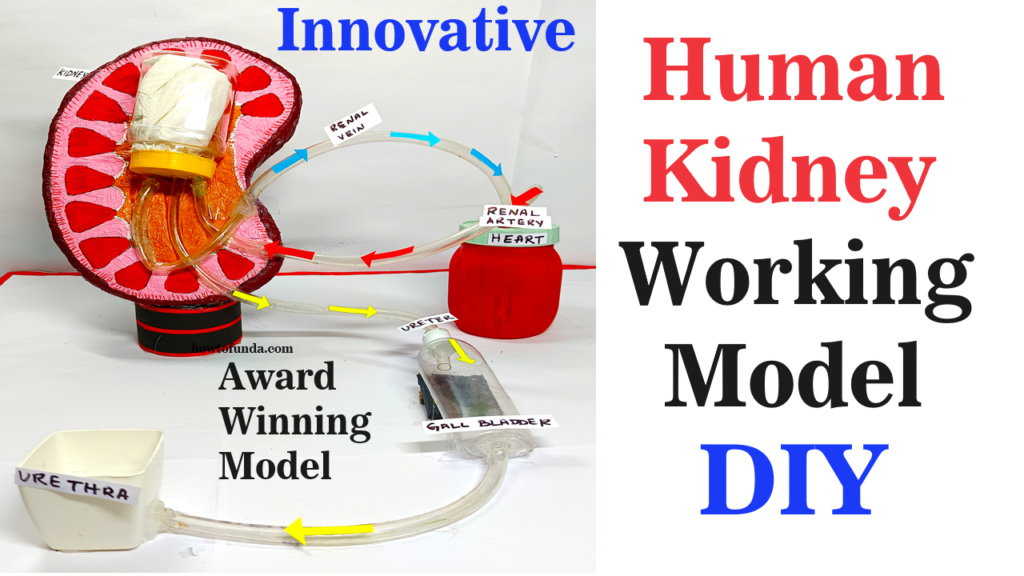Creating a working model of the human kidney can be an engaging and educational project.
Here’s a simplified step-by-step guide on how to build a basic model:

Materials needed:
- Two containers (to represent the kidneys)
- Clear plastic tubing
- Red-colored water (to represent blood)
- Yellow-colored water (to represent urine)
- Clear water (to represent purified blood)
- A container (to represent the bladder)
- Hot glue gun or adhesive
- Scissors
Instructions:
- Prepare the Kidney Containers:
- Take two containers of the same size and shape to represent the kidneys.
- Use a hot glue gun or adhesive to attach one end of a clear plastic tubing to the bottom of each container. This tubing will represent the renal arteries (bringing blood to the kidneys) and the renal veins (returning purified blood to the heart).
- Create Blood and Urine:
- Fill one container with red-colored water to represent blood.
- Fill another container with yellow-colored water to represent urine.
- Connect the Tubing:
- Connect the other ends of the plastic tubing from each kidney container to simulate blood flow between the kidneys and the heart.
- Make sure the tubing is securely attached to prevent leaks.
- Simulate Blood Filtration:
- Start with the container of red-colored water (representing blood).
- Pour the red-colored water into one kidney container, simulating blood entering the kidneys for purification.
- As the red-colored water flows through the tubing, explain to observers that the kidneys filter waste and excess substances from the blood.
- Simulate Purification Process:
- Inside the kidney containers, use a filtering material such as cotton balls or sponge pieces to represent the kidney’s filtration system.
- As the red-colored water passes through the filtering material, explain how the kidneys remove waste products and excess fluids, leaving purified blood.
- Simulate Return to Heart:
- As the purified blood flows out of the kidney containers through the tubing, pour it into a separate container to represent blood returning to the heart.
- Simulate Urine Collection:
- After purification, the remaining liquid in the kidney containers (yellow-colored water) represents urine.
- Pour the yellow-colored water from the kidney containers into a bladder-shaped container to represent urine storage.
- Demonstrate Circulation:
- Discuss with observers how the kidneys play a crucial role in maintaining the body’s internal environment by regulating water balance, electrolytes, and removing waste products.
- Emphasize the importance of kidney function in overall health and well-being.
By following these steps, you can create a simple working model of the human kidney that demonstrates the basic concepts of blood filtration, urine production, and circulation. Adjustments can be made based on available resources and desired level of detail or complexity.

